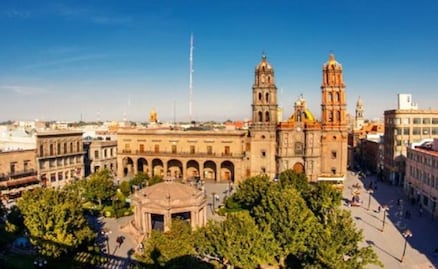Más Información

FGR extrae información de la caja negra del Tren Interoceánico; reitera que habrá reparación integral del daño

Capturan a “El Betillo” en Morelia; lo vinculan con asesinato de Hipólito Mora, fundador de las autodefensas michoacanas

Ernestina Godoy nombra a Ulises Lara, fiscal especial en Investigación de Asuntos Relevantes; "estaremos trabajando por la justicia"

Sismo en CDMX: “Nos sacó un susto porque se movió como gelatina”, relata empleado de estacionamiento público
Today, UNESCO’s World Heritage Committee has included the Tehuacán-Cuicatlán valley in Mexico in their World Heritage sites list . The cultural and educational organization of the United Nations recently announced the addition through a press release.
The Tehuacán-Cuicatlán valley was deemed a “mixed site,” which means that it comprises elements of “both natural and cultural value,” according to the United Nations Educational, Scientific, and Cultural Organization (UNESCO) .
The addition of the Mexican site was made official on the morning of July 2 , at the World Heritage Committee’s 42nd reunion which took place in Manama, Bahrain. On the same day, Alejandro Del Mazo, the national commissioner of Protected Natural Areas in Mexico tweeted: “International news to be proud of! The protected natural area of the Tehuacán-Cuicatlán valley has just been included as a 'mixed site' in UNESCO’s World Heritage list.”
In their press release, issued in Bahrain, UNESCO pointed out that “the Tehuacán-Cuicatlán valley at the Mesoamerican region is an arid and semiarid zone with the most biological diversity in all of North America.”
“The serial site consists of three elements: Zapotitilán-Cuicatlán, San Juan Raya, and Purrón . The valley is one of the cactus’ main diversification centers, which is a botanical family in danger of extinction all around the world,” commented the international organism.
“The site is home to the largest columnar cacti forests in the planet, which form a unique and composite landscape along with gigantic maguey plants, yuccas, and holm oaks ,” stated UNESCO through their press release.
Archaeological findings have also pointed to a gradual process of technical evolution which reflects an early domestication of these plants. The valley has also shown an exceptional water management system that uses water ditches, wells, aqueducts, and dams , which could very well be the most ancient water system in the continent. It is said to have enabled sedentary settlements of communities that once derived their livelihoods from agriculture.
UNESCO’s World Heritage site list is currently comprised of 1,092 sites , 35 of which can be found within the Mexican territory . Mexico is one of the countries with the most World Heritage sites in the world.
dm
Noticias según tus intereses
[Publicidad]
[Publicidad]











